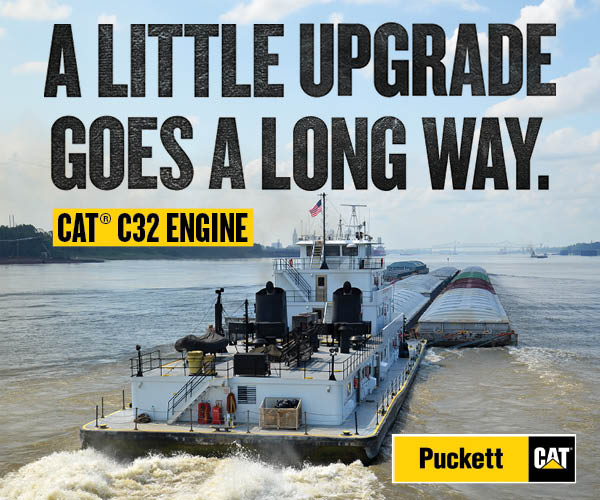Alaska District Puts Deep-Draft Study On Hold
The U.S. Army Corps of Engineers Alaska District announced a 12-month pause in the feasibility study for the Alaska Deep-Draft Arctic Port System in order to revalidate the potential economic benefits and justification for the project.
In September Royal Dutch Shell Oil announced it was suspending exploration activities in the Arctic for the “foreseeable future.” The Corps said this brings into question the validity of the current economic assumptions and overall justification for the project.
Chief of Civil Works for the Alaska District Bruce Sexauer said typically a study without proper economic justification is terminated. However because of the volatile nature of the oil and gas industry and “the strong interest in enhanced Arctic marine infrastructure” the Corps paused the study rather than terminate it Sexauer said.
The study in search of the best deep draft port for Alaska began in December 2011 and has proceeded to date under an agreement with the State of Alaska the cost sharing non-federal sponsor. Potential port sites were investigated and the Port of Nome was eventually identified as having the greatest potential for initial Arctic port investment.
Prior to that in 2010 the Alaska State Legislature established the Alaska Northern Waters Task Force (NWTF) to identify opportunities to increase the state’s engagement in Arctic international issues northern shipping routes mineral extraction oil and gas exploration commercial fishing and tourism. NWTF released a report in January 2012 which identified 11 potential deep-draft sites and which were considered for the Corps study.
In March 2013 the Corps published a report (Alaska Deep-Draft Arctic Port System Study) after the first year of its co-sponsored deep-draft three-year study with the Alaska State Department of Transportation and Public Facilities. The study area includes more than 3000 miles of coastline and Nome Harbor was chosen as the best potential site.
In February 2015 the Corps Alaska District released the Draft Integrated Feasibility Report Draft Environmental Assessment (EA) and Draft Finding of No Significant Impact (FONSI): Alaska Deep-Draft Arctic Port System Study which examines the need for navigation improvements to serve the Alaska Deep-Draft Arctic Port System at Nome Alaska and determine the feasibility of federal participation.
Several plans were considered for Nome Harbor and the recommended plan included demolishing the existing spur breakwater at the end of the causeway constructing a 2150- foot long causeway extension and 450-foot long dock; and deepening the new area and entrance channel to minus 28 feet Mean Lower Low Water.
The estimated project cost is $210.8 million including land values easements relocations and local service facilities. The total cost for navigation features will be $149.8 million ($97.4 million federal and $52.4 million non-federal).
The report outlines that the federal government will cover 90 percent of the costs for deepening of the general navigation features from 0 to 20 feet and 10 percent shared by the non-federal sponsor. The federal costs for deepening from 20 feet to 45 feet are 75 percent and 25 percent by the non-federal sponsor. Accordingly the federal and non-federal shares of the estimated cost of the deepening at $8.3 million are $6.8 million in federal funding and $1.5 million from the non-federal sponsor.
The City of Nome is on the southern coast of the Seward Peninsula approximately 550 miles northwest of Anchorage. Nome is the hub for more than 50 communities along the western shore of Alaska and lies 125 miles from the Bering Strait. It is a regional center for retail goods medical services transportation mining fishing and other businesses.
The existing port and small boat harbor facilities at Port Nome have a maximum depth of -22.5 feet MLLW. The current marine infrastructure serves a fleet of tugs and barges landing craft fuel tankers government vessels research vessels cruise ships recreation vessels commercial fishing vessels and a fleet of gold dredges.
The original navigation project was completed in 1917 and was upgraded to its current configuration in 2006. The main breakwater is 3025 feet in length with a 270-foot-long spur breakwater extending from the end of a 2700-foot-long causeway. Two docks provide 400 feet of berthing.
The new plan includes building a 985-foot long 360-foot-wide and 22-foot MLLW deep navigation channel; building a 2985-foot-long rubblemound breakwater with a crest elevation of 14 feet; building a 230-foot-long rubblemound breakwater extension to the pre-existing causeway with a crest elevation of 14 feet; placing 98000 cubic yards of dredged material to fill the former navigation channel using a bargemounted crane with an open-bucket chamshell dredge; and placing 490000 cubic meters of dredged sediment at one of two dredged material placement sites in the area which was also used in the area to support maintenance dredging.
The majority of the project benefits in the study used to justify the Port of Nome expansion are related to travel cost savings for oil and gas support vessels in the Chukchi Sea. By utilizing the Port of Nome the vessels could save 1600 miles per round trip. The benefits also assumed the development of three exploration wells in the Chukchi Sea by the year 2020 which was called into question by the September announcement by Royal Dutch Shell Oil. The Corps will reevaluate the situation in one year.



